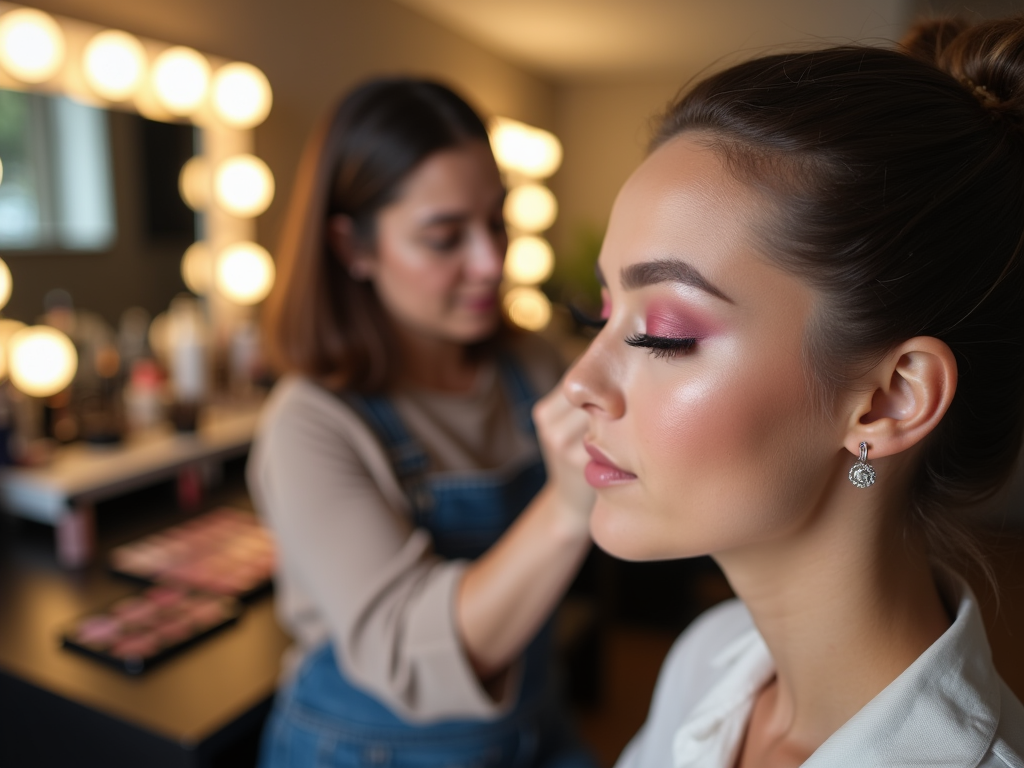Mastering eyeshadow application can seem daunting at first, but with the right techniques, anyone can learn to create stunning eye makeup looks. Whether you’re aiming for a subtle day look or a bold night statement, eyeshadow application is an art that can be perfected with practice. In this article, we will guide you through the step-by-step process of applying eyeshadow like a pro, even if you’re a complete beginner.
Understanding the Basics of Eyeshadow Application

Before you dive into the world of eyeshadow, it’s important to understand the basics. Eyeshadow is available in various forms such as powder, cream, and liquid, each offering unique benefits. Powder eyeshadows are the most common and versatile, allowing for layering and blending. Cream eyeshadows provide a more dramatic and glossy finish, while liquid eyeshadows are known for their long-lasting wear. Understanding these types will help you choose the right product for your desired look.
You will also need to familiarize yourself with different brushes. A flat shader brush is perfect for packing color onto the lid, while a fluffy blending brush helps soften edges and blend colors seamlessly. Having a pencil brush is great for precision, especially when working on the crease or applying shadow along the lash line. With the right tools and products, you’re well on your way to creating beautiful eyeshadow looks.
Prepping Your Eyelids for Flawless Eyeshadow

Preparation is key to ensuring your eyeshadow lasts throughout the day without creasing or fading. Start by cleaning your eyelids to remove any oil and makeup residue. Following this, apply an eyeshadow primer to create a smooth base, which not only intensifies the colors but also holds the shadow in place. Primer acts as a barrier that prevents natural oils from coming through your eyelids, which can otherwise cause creasing.
If you don’t have an eyeshadow primer, concealer can be used as an alternative. After applying the primer or concealer, set it with a translucent powder to absorb excess oils and create an even smoother base. A well-prepped eyelid ensures that your eyeshadow remains vibrant and intact throughout the day or night.
Now that your eyelids are prepped, it’s time to apply eyeshadow. Follow these steps for a basic yet professional look:
- Choose a base color: This should be a neutral shade close to your skin tone. Apply it across your entire eyelid using a flat shader brush.
- Apply a transition shade: Opt for a slightly darker color than your base. Use a fluffy blending brush to apply it in the crease, creating depth and dimension.
- Define the outer corner: Select an even darker shade and apply it to the outer ‘V’ of your eyelid to add structure and intensity.
- Blend, blend, blend: Use a clean blending brush to marry the colors together, ensuring that there are no harsh lines.
- Add shimmer (optional): To highlight the center of your lid, apply a light, shimmery color with your fingertip or a flat brush.
These steps serve as a fundamental guide to creating a flawless eyeshadow look. With time, you can experiment with additional colors and techniques to find what works best for you.
Blending Techniques for Seamless Eyeshadow
Blending is the most crucial skill when it comes to eyeshadow application. The aim is to create a seamless gradient of colors that transition smoothly from one shade to the next. Start by using a clean, fluffy brush to blend out any harsh lines where colors overlap. Use small, circular motions, or gentle back-and-forth sweeps to achieve a smooth finish.
If colors become muddy or lose their intensity while blending, simply reapply the colors and blend again lightly. Less is more when it comes to blending, so it’s advisable to build color gradually. Practice is key, and over time you’ll develop an intrinsic understanding of how much pressure to apply and how to best use your brushes for different eyeshadow effects.
Common Mistakes and How to Avoid Them
Even with practice, beginners often encounter common pitfalls when applying eyeshadow. The first mistake is applying too much product at once. Always start with a small amount of eyeshadow and build it up for more intensity. Another typical error is neglecting to blend between colors, leaving harsh lines that detract from a polished look.
Also, avoid using the wrong brush for the desired effect. Different brushes serve different purposes, such as flat brushes for application and fluffy brushes for blending. Lastly, skipping eyelid preparation can dramatically affect the longevity of your eyeshadow. Always use a primer to keep the eyeshadow from creasing or fading prematurely. By recognizing and correcting these mistakes, your application will improve significantly.
Conclusion
Applying eyeshadow like a pro is a skill that is accessible to everyone with practice and patience. Understanding your tools, picking the right products, and knowing the techniques for application and blending are fundamental steps towards achieving professional-looking eye makeup. Start with the basics outlined in this guide, and soon you’ll find yourself experimenting confidently with a variety of colors and styles.
Frequently Asked Questions
Q1: How can I make my eyeshadow last longer?
A1: Use an eyeshadow primer before application to prevent creasing and fading, and set it with a translucent powder for extra longevity.
Q2: What is the best brush for blending eyeshadow?
A2: A fluffy blending brush is ideal for softening edges and creating a seamless transition between different shades.
Q3: Can I use concealer as an eyeshadow primer?
A3: Yes, concealer can double as an eyeshadow primer if applied evenly and set with powder to prevent creasing.
Q4: How do I choose the right eyeshadow shades for my skin tone?
A4: Opt for shades that complement your natural skin tone. Warm skin tones typically suit earthy shades, while cooler tones can experiment with jewel tones.
Q5: Is it necessary to apply eyeshadow on my lower lash line?
A5: It’s not necessary, but applying a complementary shade can add depth and balance to the overall eye makeup look.



